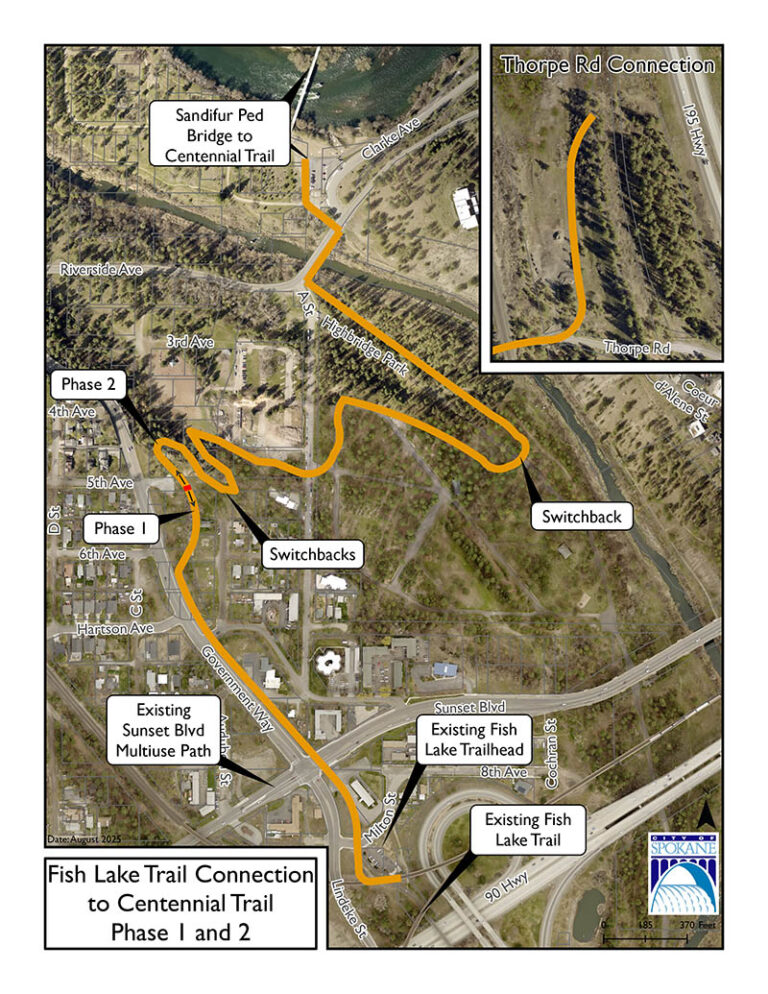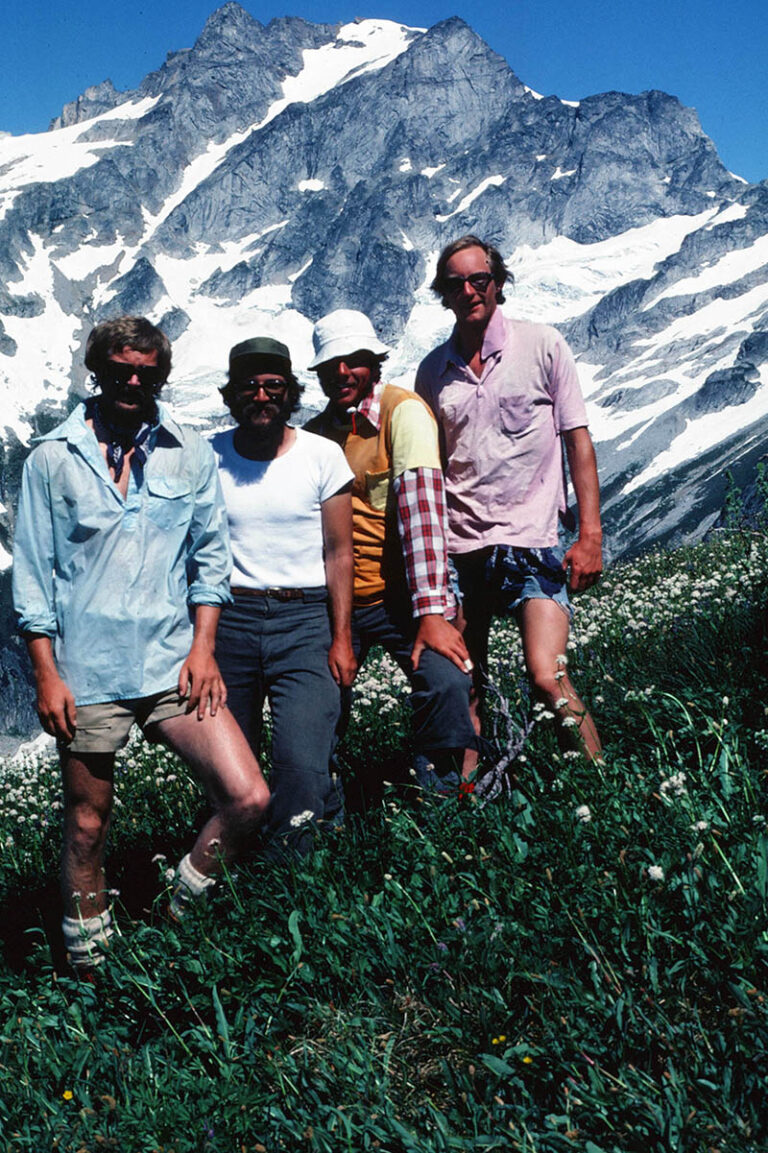In my mind, the bike lanes in Spokane serve one of two purposes. Some of them take you places you’d like to go, and some of them allow you to answer in the positive when you’re asked, “Does Spokane have bike lanes?” The latter are what I’ve heard referred to as bike lanes of opportunity. Essentially, they were put there because there was room for them, not because they connect people to destinations. Fortunately, Spokane is making improvements and rather than make my first “Everyday Cyclist” column a rant, I’d like to highlight a designated bike route and show why it works so well.
I live about three miles north of Spokane in an area flanked by Highway 395 and Highway 2. I work downtown. I started bike commuting about thirteen years ago, and when I look back at the experiences I suffered through I strongly encourage new cyclists to learn from experienced riders instead of attending the school of hard knocks as I did.
I crazily rode on Monroe for a while before moving over to Wall and Post. The rush hour traffic during the trip home was always fast, crowded and frantic. Wall and Country Homes were exceptionally busy streets and getting from Country Homes to Highway 395 and Highway 2 was scary. Even though I was on edge for much of the commute, I hung in there because I focused on the positives. Riding was cheaper than driving, I didn’t have the hassle or cost of parking, and I got some exercise at least twice a day.
After a few years (I’m tagging myself as a slow learner), somebody told me about the designated north-south bike route that begins at Holland and follows Colton, Standard, Addison, Liberty, Lidgerwood, Mayfair, Foothills and Buckeye, and last of all Howard to Riverfront Park. Although it extended the length of my trip by a half mile, I found it was excellent for a number of reasons. It’s pleasantly quiet even during rush hour. There are painted bike lanes for the majority of the way so I don’t have to merge with traffic very much. And where there are no bike lanes, it’s mostly quiet neighborhood streets anyway. Anyone riding to north Spokane from downtown has to climb a hill at some point. I appreciate all the exercise I got from slogging up Post Street hill, but the short climb from Mayfair to Lidgerwood made the trip home so much easier and enjoyable. Lastly and most importantly, this route takes you places—it connects you to destinations.
Check out the schools along the way. Neighborhoods are linked to North Central High, Lidgerwood Elementary and Shiloh Elementary schools. If you need to run errands or do some shopping, you can follow this bikeway to a number of big box stores, grocery stores, as well as small stores and shops. Medical appointments at Holy Family Hospital and the surrounding doctors’ offices are but an easy spin on two wheels. For your play and leisure needs, this bike route will take you to or near no less than six parks: Riverfront, Corbin, Byrne, Glass Playfield, Nevada Playfield and Friendship parks. And to top it off, the Spokane Transit Authority #26 bus overlaps some of this route.
Much of what I’ve described about this route relates to Complete Streets where using different modes of transportation should be easy and safe. When I’m rolling to and from work I see children and adults on bicycles, other bike commuters, kids walking to and from school or a park, people on the sidewalk carrying shopping bags, folks patiently waiting for the bus to arrive or walking home after getting off the bus. While all this is going on, a not overwhelming number of cars hustle up and down the road. Whether you’re driving, riding or walking along this route, your mode of transportation has equal access to the schools, stores and parks along the way. Granted, it’s not perfect and there is plenty of room for improvement. Riding a bike across Division and Ruby and then trying to turn north onto Mayfair can be tricky at 5:00 in the afternoon when a ton of homeward bound motorists fill all four lanes on North Foothills. And there are many intersections that could use curb ramps. Even so, I think this route still has a lot going for it in terms of safety and ease of access.
According to the U.S Department of Transportation Bureau of Transportation Statistics, 17 percent of bicyclists feel threatened for their personal safety in areas where there are no bike lanes or paths. That drops to 10 percent when both bike paths and lanes are available. I rarely feel threatened on this bike route, whereas I almost always felt threatened before.
Spokane has been improving its cycling infrastructure over the last couple of years. Though the city’s potential still exceeds its reach, I’m very optimistic. In the meantime, if you’re looking for an easy bike ride from downtown Spokane to Highway 2 or if you’d like a small taste of what Complete Streets is about, come take a ride with me. //
Hank Greer was born in Spokane, moved around, came back and graduated from North Central High School, and retired from the Air Force after 23 years of service. He has lived in Spokane since 1995 and is an avid cyclist and runner.













